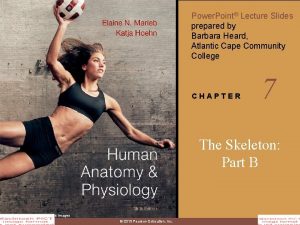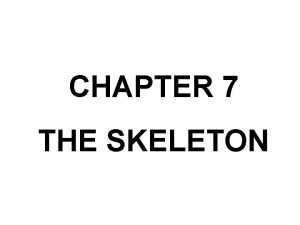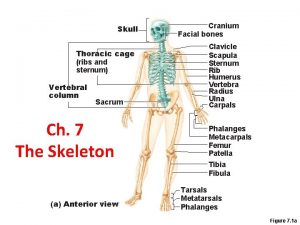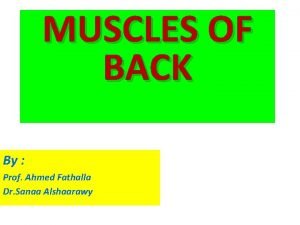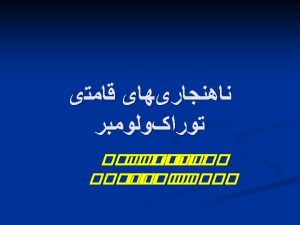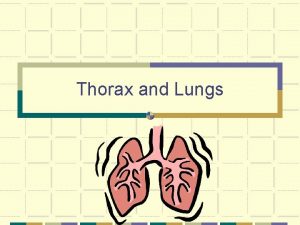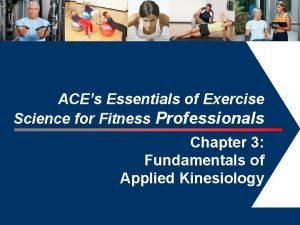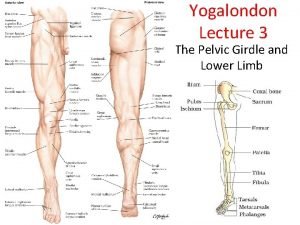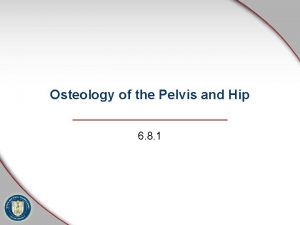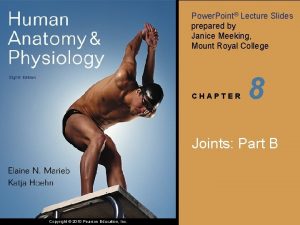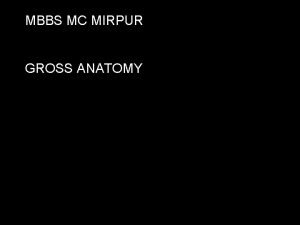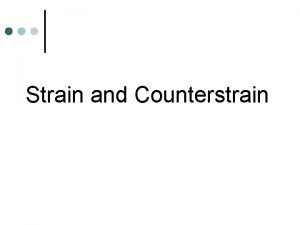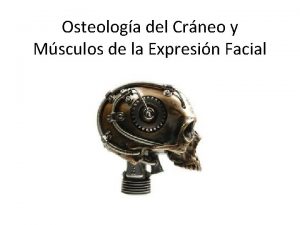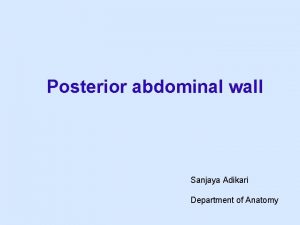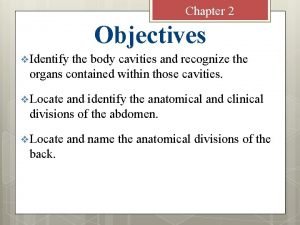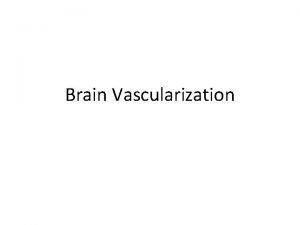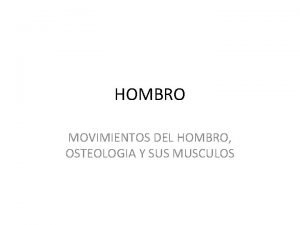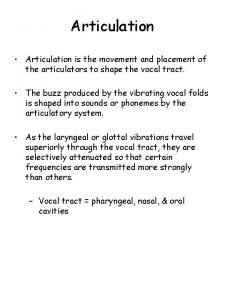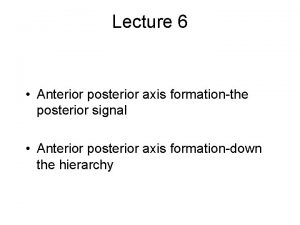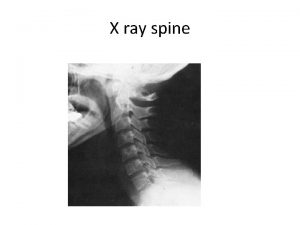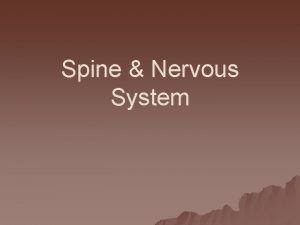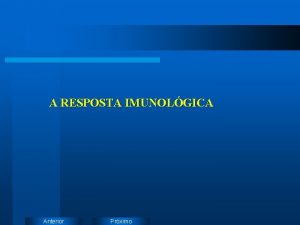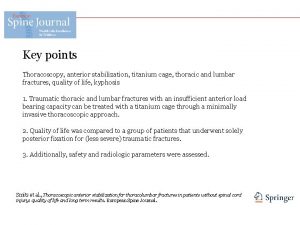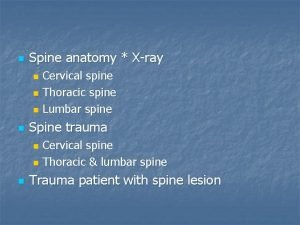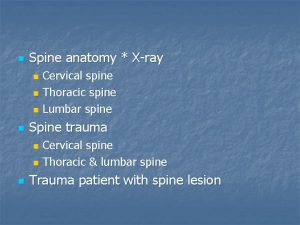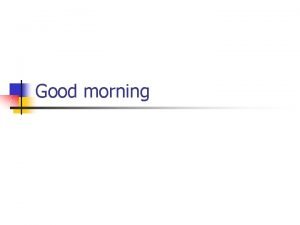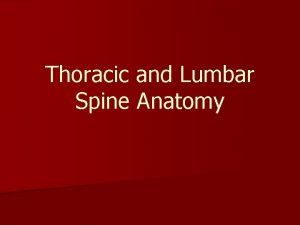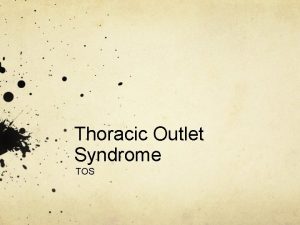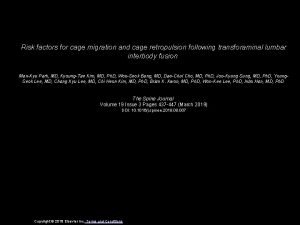Thoracic Spine Thoracic Cage Anterior Thoracic Cage Posterior






















- Slides: 22

Thoracic Spine

Thoracic Cage Anterior

Thoracic Cage Posterior

Parathoracic Musculature

Thoracic Musculature

Adam’s Position Procedure: Patient standing. Stand directly behind and inspect for scoliosis, hyperkyphosis, or kyphoscoliosis. Next. Patient should flex forward at hips. Inspect again. Positive Test: If scoliosis, hyperkyphosis, or kyphoscoliosis reduces with forward bending: poor posture, overdevelopment of unilateral spinal and/or upper extremity musculature, nerve root compromise, leg length deficiency, or hip contracture.

Adam’s Position If scoliosis, hyperkyphosis, or kyphoscoliosis does not reduce with forward bending: structural deformity (i. e. hemivertebra, compression fracture) or idiopathic scoliosis.

Adam’s Position

Spinal Percussion Procedure: Patient seated, head slightly flexed, percuss the spinous processes and associated musculature. Positive Test: Local pain may indicate a fractured vertebra without neurological compromise or ligamentous sprain. Radicular pain may indicate a fractured vertebra with neurological compromise or a disc defect with neurological compromise.

Spinal Percussion

Soto-Hall Test Procedure: Patient supine, assist him in flexing the chin to the chest. Positive Test: Local pain indicates osseous, discal, or ligamentous pathology. Non-specific test. Simply isolates cervical and thoracic spine in passive flexion.

Soto-Hall Test

Sternal Compression Procedure: Patient supine. Push down on sternum. Positive Test: Pressure on the sternum compresses the lateral borders of the ribs. If a fracture is present here, pain will be produced or exacerbated. Note: If trauma has occurred and you suspect a fractured rib, radiographs should be performed first before performing this test.

Sternal Compression

Beevor’s Sign Procedure: Patient supine. Patient should hook fingers behind neck and raise the head towards the feet. Mimic a sit-up.

Beevor’s Sign Positive Test: The umbilicus will not move in a patient with not thoracic root lesion. Umbilicus moves superiorly: bilateral T 10 – T 12 lesion Umbilicus moves superiorly and laterally: Unilateral T 10 – T 12 nerve root lesion on opposite side. Umbilicus moves inferiorly: bilateral T 7 – T 10 nerve root lesion. Umbilicus moves inferiorly and laterally: Unilateral T 7 – T 10 nerve root lesion of the opposite side.

Beevor’s Sign

Schepelmann’s Sign Procedure: Seated patient. Flex at waist to right and left. Positive Test: Pain on side of lateral bending: intercostal neuritis. Pain on opposite side of lateral bending: fibrous inflammation of the pleura or intercostal sprain.

Schepelmann’s Sign

Chest Expansion Procedure: Patient seated. Place a tape measure around the patient’s chest at the level of the nipple. Instruct patient to exhale and record the measurement. Instruct the patient to inhale maximally and record the measurement.

Chest Expansion Positive Test: Normal chest expansion for a man is 2 inches or more. Normal chest expansion for a woman is 1 inch or more. A decrease in chest expansion indicates an ankylosing condition at the costotransverse or costovertebral articulation.

Chest Expansion
 Thoracic cage anterior view
Thoracic cage anterior view Thoracic cage anterior view
Thoracic cage anterior view Head of rib
Head of rib Muscles of thoracic spine
Muscles of thoracic spine Sway back posture
Sway back posture Auscultatory triangle of the back
Auscultatory triangle of the back Posterior chest
Posterior chest Posterior curvature of spine is called
Posterior curvature of spine is called Muscles of pelvic girdle
Muscles of pelvic girdle Iliac tubercle
Iliac tubercle Anterior inferior iliac spine
Anterior inferior iliac spine Psis level with s2
Psis level with s2 Gerdys tubercle
Gerdys tubercle Pelvic counterstrain points
Pelvic counterstrain points Palatal seal
Palatal seal Fosa craneal media
Fosa craneal media Anterior vs posterior abdominal wall
Anterior vs posterior abdominal wall Ventral vs dorsal
Ventral vs dorsal Posterior circulation
Posterior circulation Palatal bar and palatal strap
Palatal bar and palatal strap Deltoides fibras anteriores
Deltoides fibras anteriores Facies infratemporalis alae majoris
Facies infratemporalis alae majoris Articulatory muscles
Articulatory muscles
